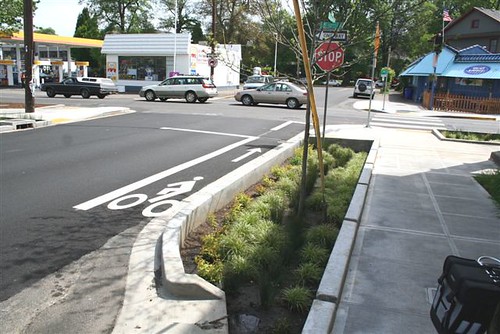GUEST POST by a Staff Writer at Dry Depot Being a caregiver is a difficult task and many of us will face extreme physical and emotional challenges as we care for our loved ones. However, we continue to go about our tasks, as it is an important part of our
Continue readingTag: Resilience
Politics, Re-Spun: Welcome, Dropping Oil Prices!
So, expensive oil made the tarsands and LNG more financially attractive if not climate-destroying. We know this because…science! Unless you are a science-denier. But even with and prices AND demand dropping, we are seeing the makings of a real flattening of long-term stability in demand that can fundamentally undermine the
Continue readingThe Disaffected Lib: Hey, Think You’re Resilient?
“Resilience.” It’s the new climate change buzz word. It applies to individuals, communities, institutions, and infrastructure. Resilience is the ability to bounce back from repeated climate change impacts. It’s the ability to withstand repeated floods, for example. That might require making your home resilient by having it mounted on stilts
Continue readingTHE CAREGIVERS' LIVING ROOM A Blog by Donna Thomson: Memoir of Mourning: Journey Through Grief and Loss to Renewal (Book Review)
Perhaps you fear losing the parent you care for. Or maybe, you fear your own death as you care for your dying relative. Maybe you just don’t know who you will be when your loved one passes and leaves you alone in the world, without the identity of caregiver. Claudia
Continue readingPolitical Eh-conomy: Victim or menace: Notes on the TFWP and political agency
The louder the debate about temporary foreign workers grows, the more it seems temporary foreign workers, especially those from the global South performing low-wage labour, are left in the din on the sidelines. While there have been stories about exploitation on the job and beyond, much of the focus is
Continue readingTHE CAREGIVERS' LIVING ROOM A Blog by Donna Thomson: The Caregiver Benefits of Silence and Solitude
This morning, I have no intention of getting dressed. I have a cold and sore throat, but I’m not complaining, because I’m tucked up in a cosy robe, reading in a blissfully quiet house. An hour ago, I settled on the sofa with my coffee and “The Guardian” newspaper open
Continue readingTHE CAREGIVERS' LIVING ROOM - A Blog by Donna Thomson: Guest Post: 4 Tips on How Caregivers Can Keep Their Family Relationships Intact
4 Tips to Help You Reduce the Impact of Caregiving on your Relationships Becoming a caregiver can be one of the most impactful changes that can occur in a person’s life. Caregiving is not a change that only affects the relationship between you and the person you are caring for,
Continue readingTHE CAREGIVERS' LIVING ROOM - A Blog by Donna Thomson: Making Peace with Aging and Infirmity
On holiday in Cat Island, Bahamas recently, something happened. Regular readers of my blog might recall that I’ve blogged about Cat Island before – it’s a remarkable place in its beauty, its simplicity and its authentic (but few) inhabitants. Last year, I visited an 87 year old firecracker called Miss
Continue readingTHE CAREGIVERS' LIVING ROOM - A Blog by Donna Thomson: Positive Self Talk = Powerful Medicine
I learned about the power of positive self-talk when my children were small. I would cross the street with Nicholas in his wheelchair, my daughter Natalie in her stroller and our golden retriever on a leash. I used to push Nick and Natalie at once, while keeping the dog with
Continue readingopenalex: Sustainable Urban Resilience: A Contradiction in Terms?
David Bello, Associate Editor over at Scientific American, has an interesting post up today looking at the supposed tensions between “resilience” and “sustainability”. His argument in a nutshell is that precisely the characteristics that make many urban systems resilient can also make them deeply unsustainable from an environmental point of
Continue readingopenalex: Sustainable Urban Resilience: A Contradiction in Terms?
David Bello, Associate Editor over at Scientific American, has an interesting post up today looking at the supposed tensions between “resilience” and “sustainability”. His argument in a nutshell is that precisely the characteristics that make many urban systems resilient can also make them deeply unsustainable from an environmental point of
Continue readingopenalex: Sustainable Urban Resilience: A Contradiction in Terms?
It’s not so much a contradiction as an evolution. Let me show you what I mean.
THE CAREGIVERS' LIVING ROOM - A Blog by Donna Thomson: Keeping the Demons at Bay
Yesterday, I wrote about those disaster scenarios that have a way of poisoning our imaginations. Today, I’ve been thinking about some strategies that I use to keep the demons at bay, especially now, when an trip to the emergency room with Nicholas is fresh in my mind. Nick is 23
Continue readingTHE CAREGIVERS' LIVING ROOM - A Blog by Donna Thomson: The Caregivers’ Worst Fear
Every caregiver has a worst fear – a nightmare scenario that unfolds like an unwanted, sinister guest in the imagination. It might be triggered by the sound of an unusual thud upstairs, a front door slamming, or the smell of burning toast. In my case, it’s the telephone. When Nicholas
Continue reading
